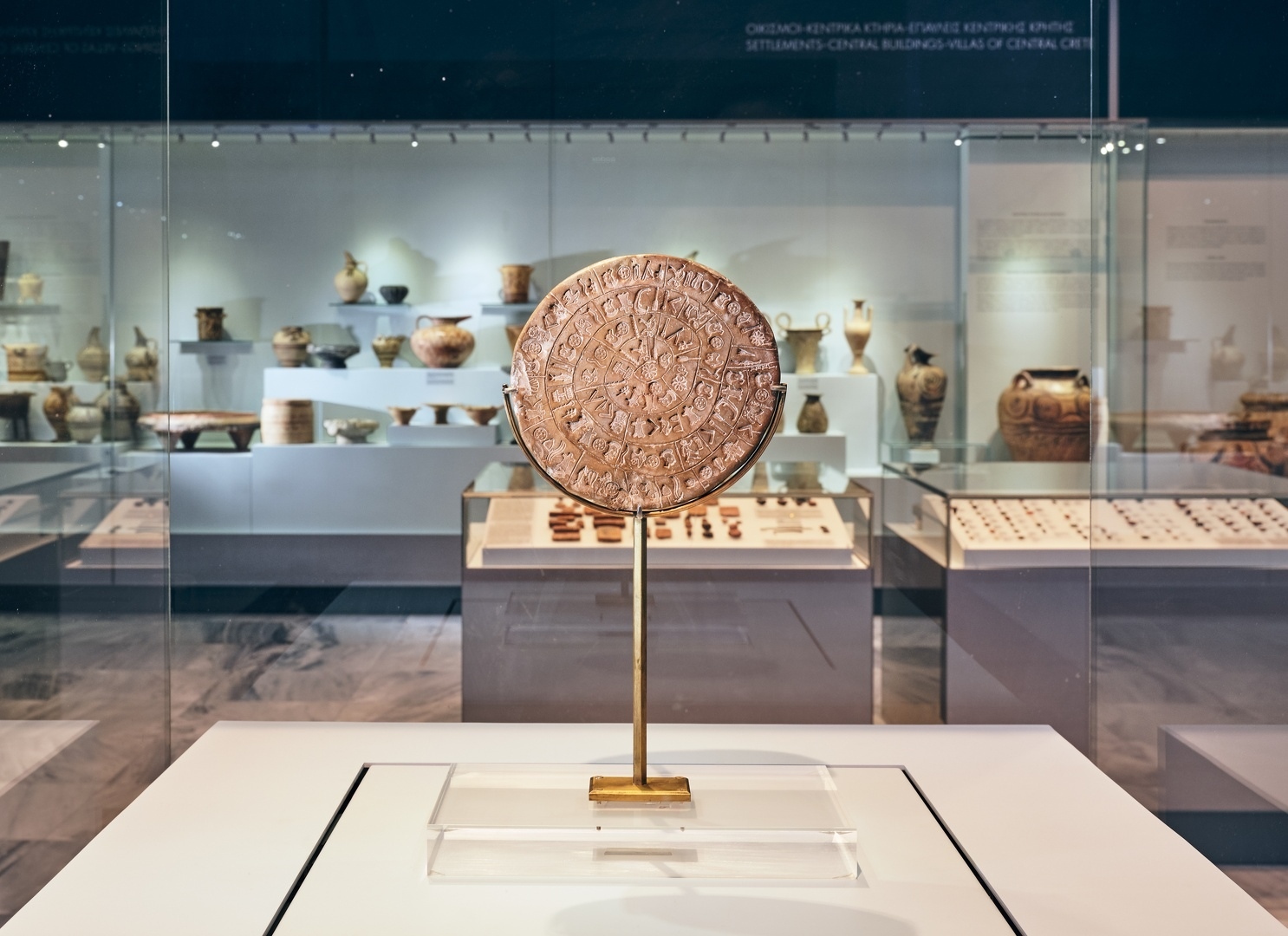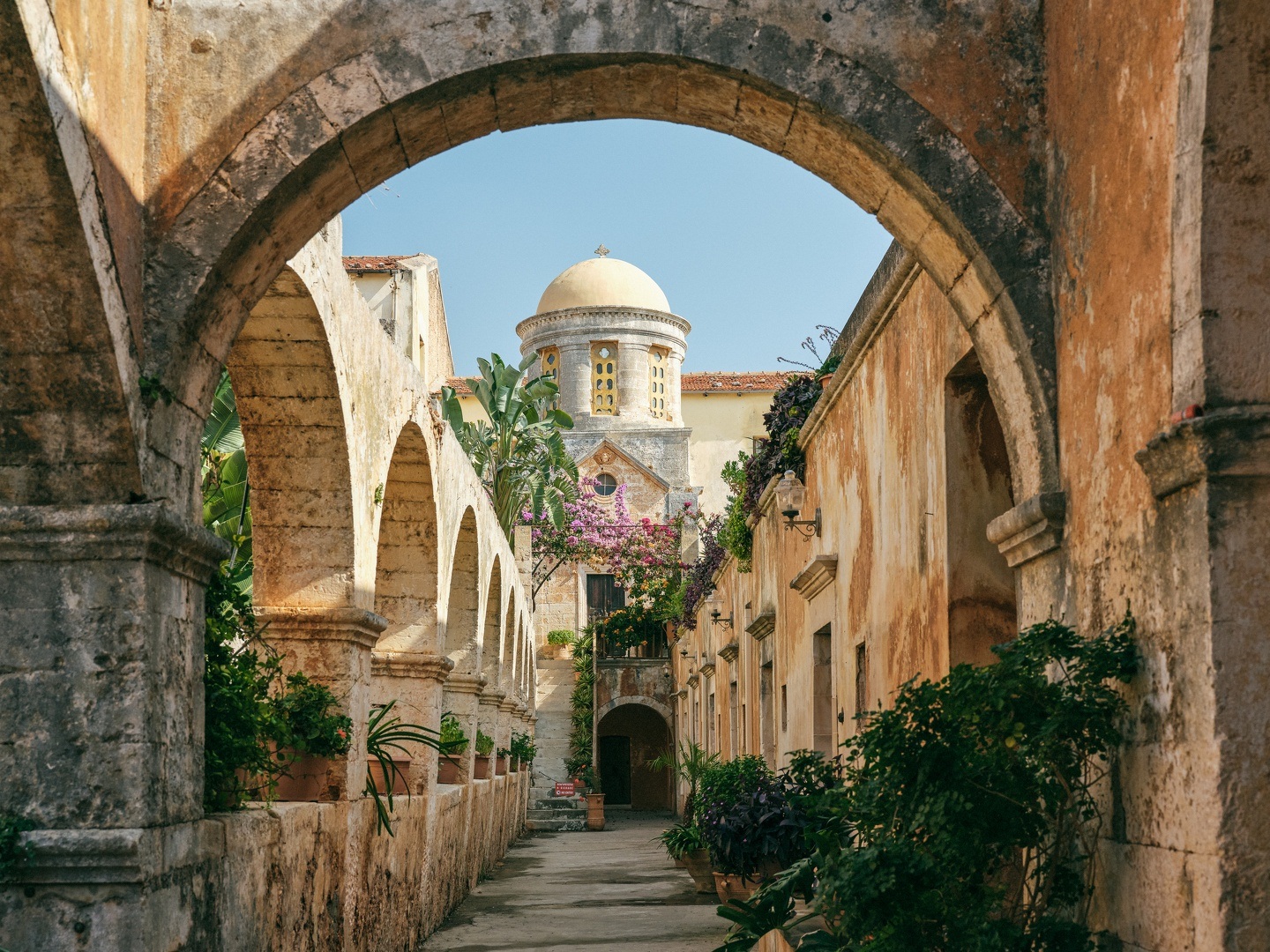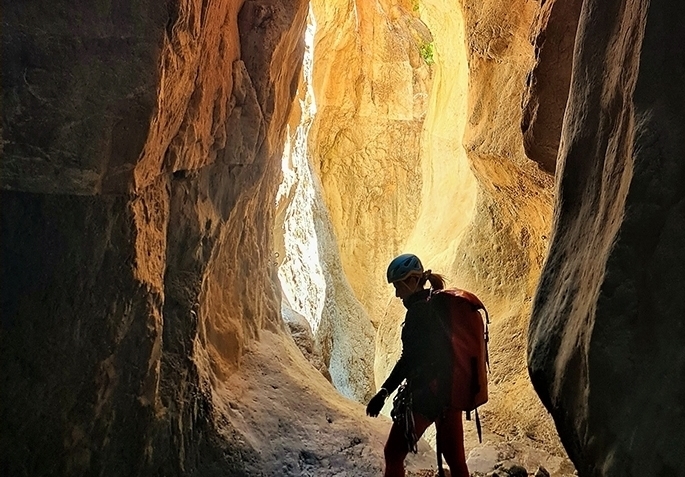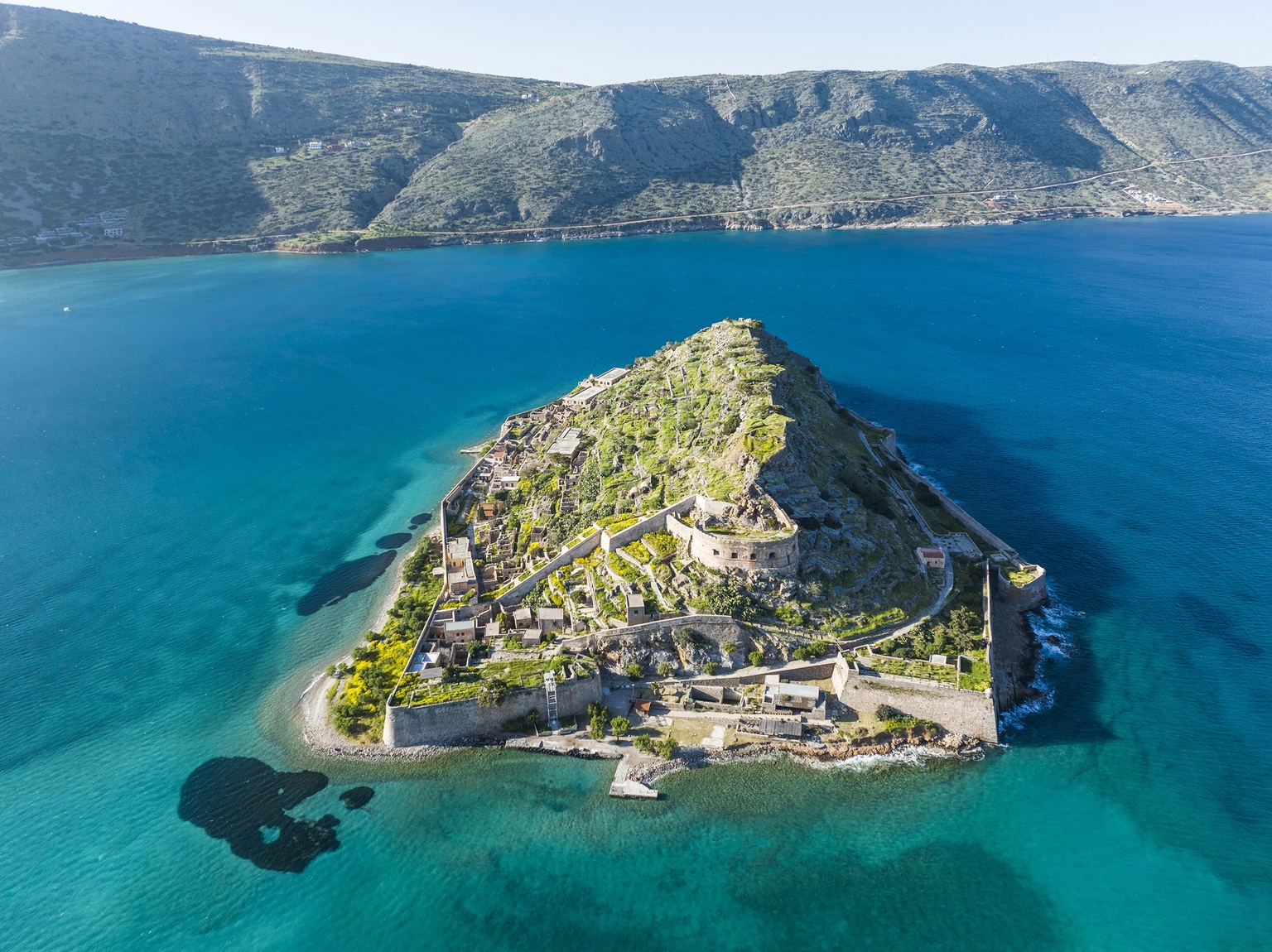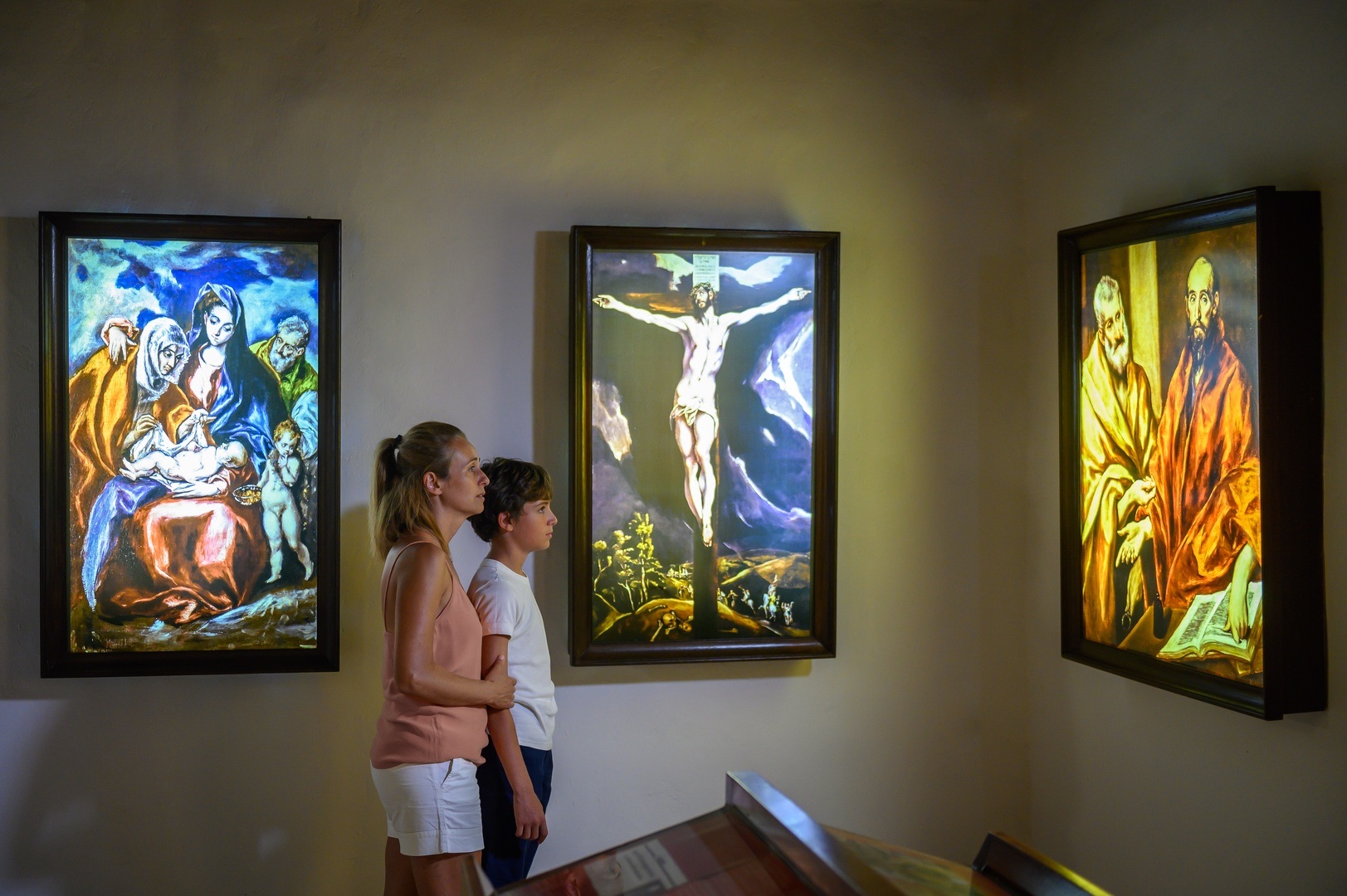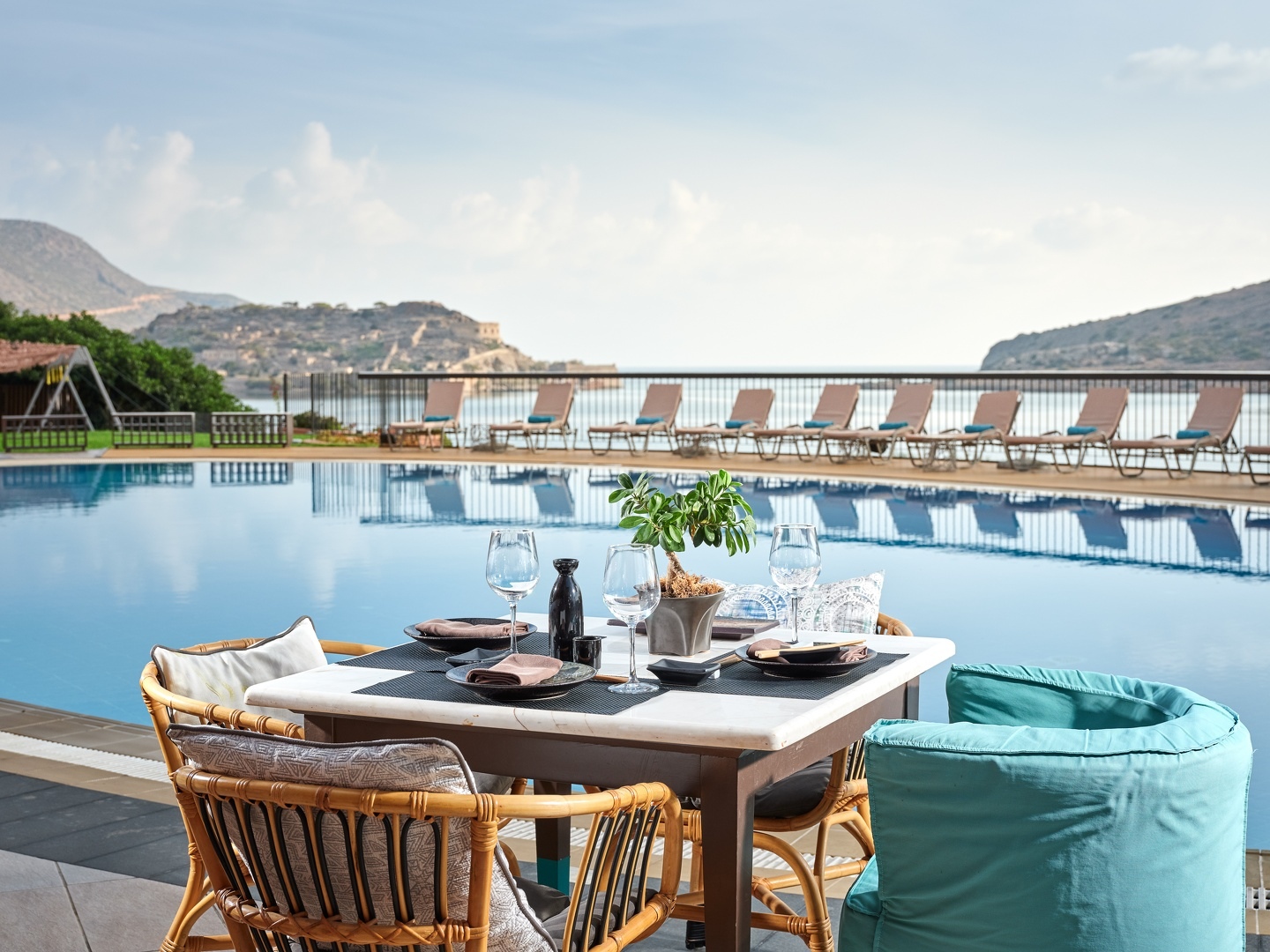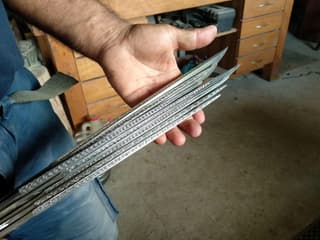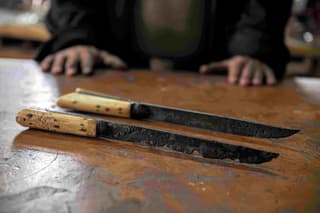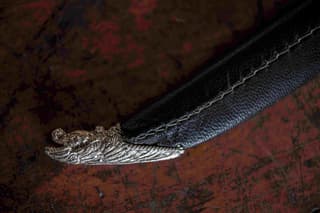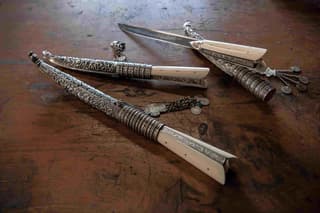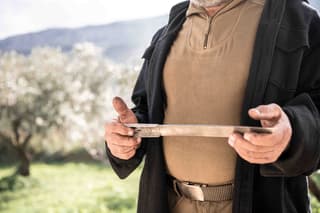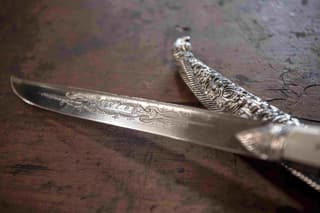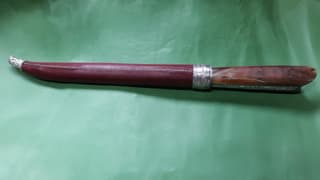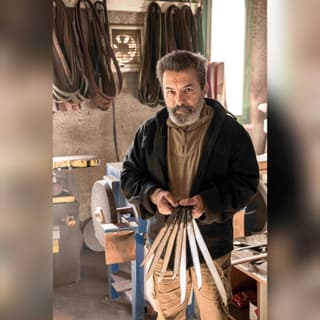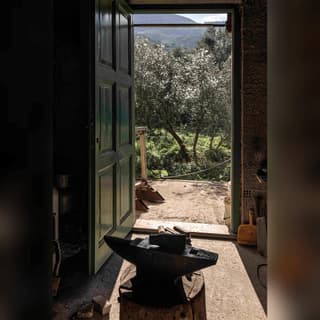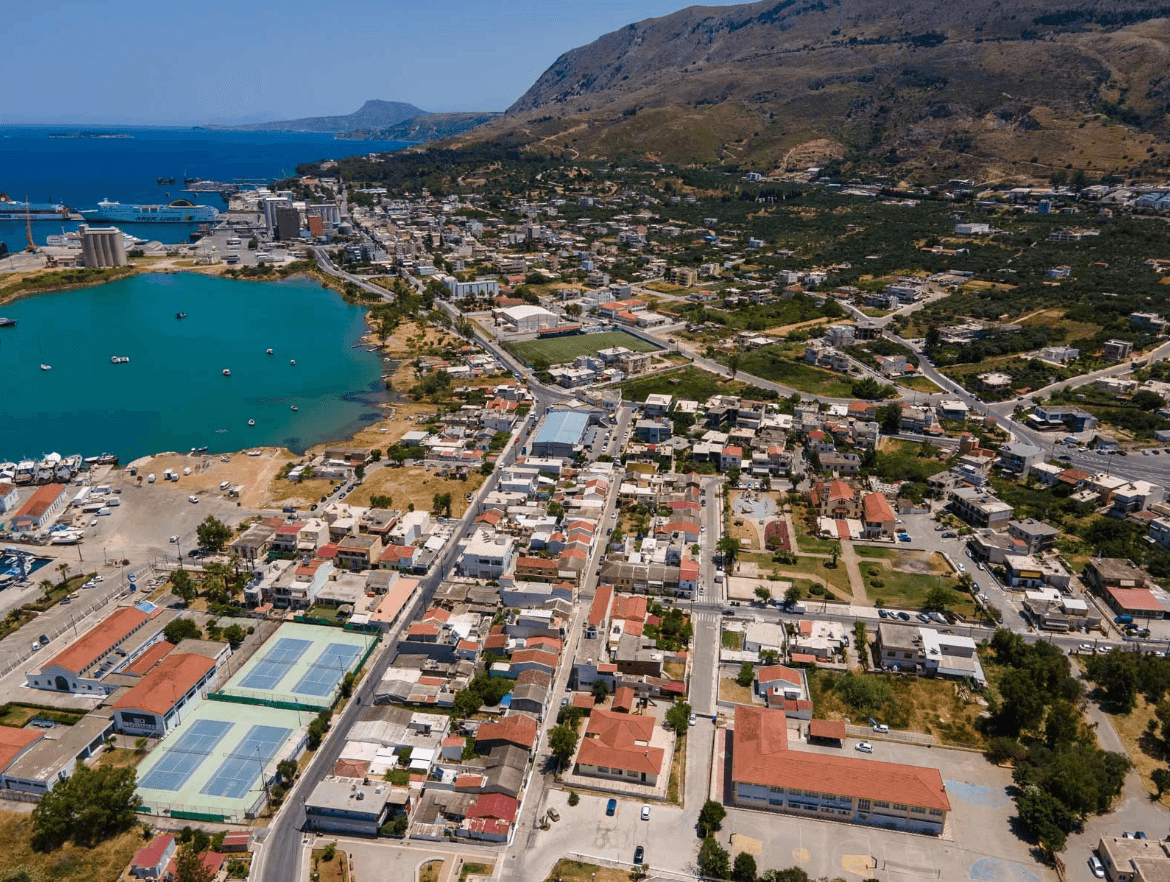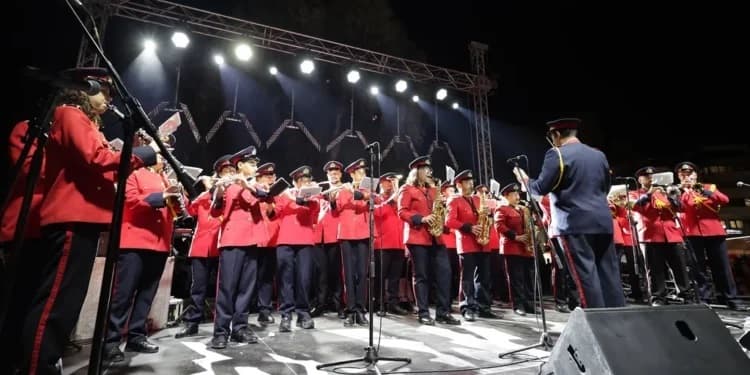The bladesmith is also a cobbler, a painter and an engraver
Author Discover Crete
Culture
Culture
Bare concrete and metal make up the major decor elements in Stavros’ no-frills Cretan knife works in Souda in the region of Hania, although there are also tools of all shapes and sizes hanging in rows, stacks of books weighted down with goat’s horns, and a grinder – the single piece of equipment that excited his fancy and got him interested in this craft as a boy.
The windows look out over an olive orchard; the smooth curves of the trees are in sharp contrast to the hard steel he fashions, reminding me of the contrasting characteristics of the Cretan knife, both a weapon and a work of art. “The bladesmith is also a cobbler, a painter and an engraver,” says Stavros, fanning out several engraved blades across the palm of his hand. The ornate motifs are laden with symbolism. The dragons facing each other refer to the battle between good and evil. The cypress denotes longevity. Handcrafted Crete The white handle, once made of ivory from Egypt but now made of a goat’s horn or a cow’s bone, has an aerodynamic shape resembling a kite. The masia is an implement that resembles a small set of tongs and that slides into a knife’s handle; it was once used on the hot coals of a water- pipe and by more dapper users to tidy their moustaches. The Cretan knife has been a traditional tool of historical importance since the times of the Turkish occupation. To this day, it remains a gift bestowed at births and weddings, from father to son and from groom to best man. That's not to say that women were left out; it was customary for the groom to give his bride-to-be a smaller knife, called an argyrobounialaki, which was a beautiful decorative item but also an effective weapon. The Cretan knife, Stavros explains, embodies its owner’s ego. “Much like a cellphone does today,” I add, and he laughs.
Source: “Handcrafted Crete”, Isabella Zambetaki, Region of Crete


